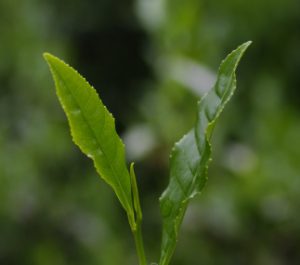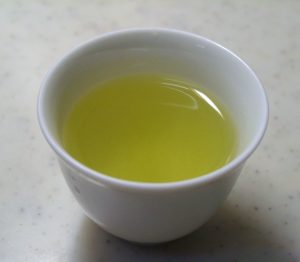 The Sayamakaori (さやまかおり) cultivar is named after the Sayama tea region, which encompasses Saitama prefecture and a small area of northwestern Tokyo.
The Sayamakaori (さやまかおり) cultivar is named after the Sayama tea region, which encompasses Saitama prefecture and a small area of northwestern Tokyo.
This cultivar is fairly popular, but not as much as the Yabukita cultivar.
It’s main benefits are a high yield at harvest (more than Yabukita), resistance to cold, and ease of cultivation.
All about Sayamakaori
Sayamakaori was selected from seeds resulting from natural crossing of Yabukita tea plants.
The selection was conducted in the Saitama Prefecture Tea Experimental Station in 1958, and it was registered as tea cultivar #31 in 1971, meant for sencha production.
Its leaves are similar to Yabukita, oval shaped but slightly bigger and thicker.
This cultivar is harvested 2 to 3 days earlier than Yabukita, and has a rich aroma and flavor.
 It’s also rich in catechins, a primary reason why it’s sometimes made into black tea as well.
It’s also rich in catechins, a primary reason why it’s sometimes made into black tea as well.
However, you must take care when brewing it in green tea form because it can easily become too astringent.
While not particularly resistant to diseases, Sayamakaori is a good alternative to Yabukita, especially in the northern regions of Japan where the weather is colder.

April 10, 2014
Is there a major difference in the aroma and flavour between Yabukita and Sayama Kaori? From cultivation point of view, is Sayama Kaori better for colder places or perhaps north facing hills?
Unfortunately the few Sayama Kaori that our tea garden had all perished not because of the local conditions and lack of care but they were already in a bad state by the time they had reached here. Perhaps next time we will have better luck.
April 10, 2014
Hello Lochan
I wouldn’t call it a major difference. Regarding cultivation, I’m not an expert on that but from what I researched, it fares even better than Yabukita in cold weather.
Sorry about your tea plants. You have so many varieties in you tea garden, you must probably know more than me!